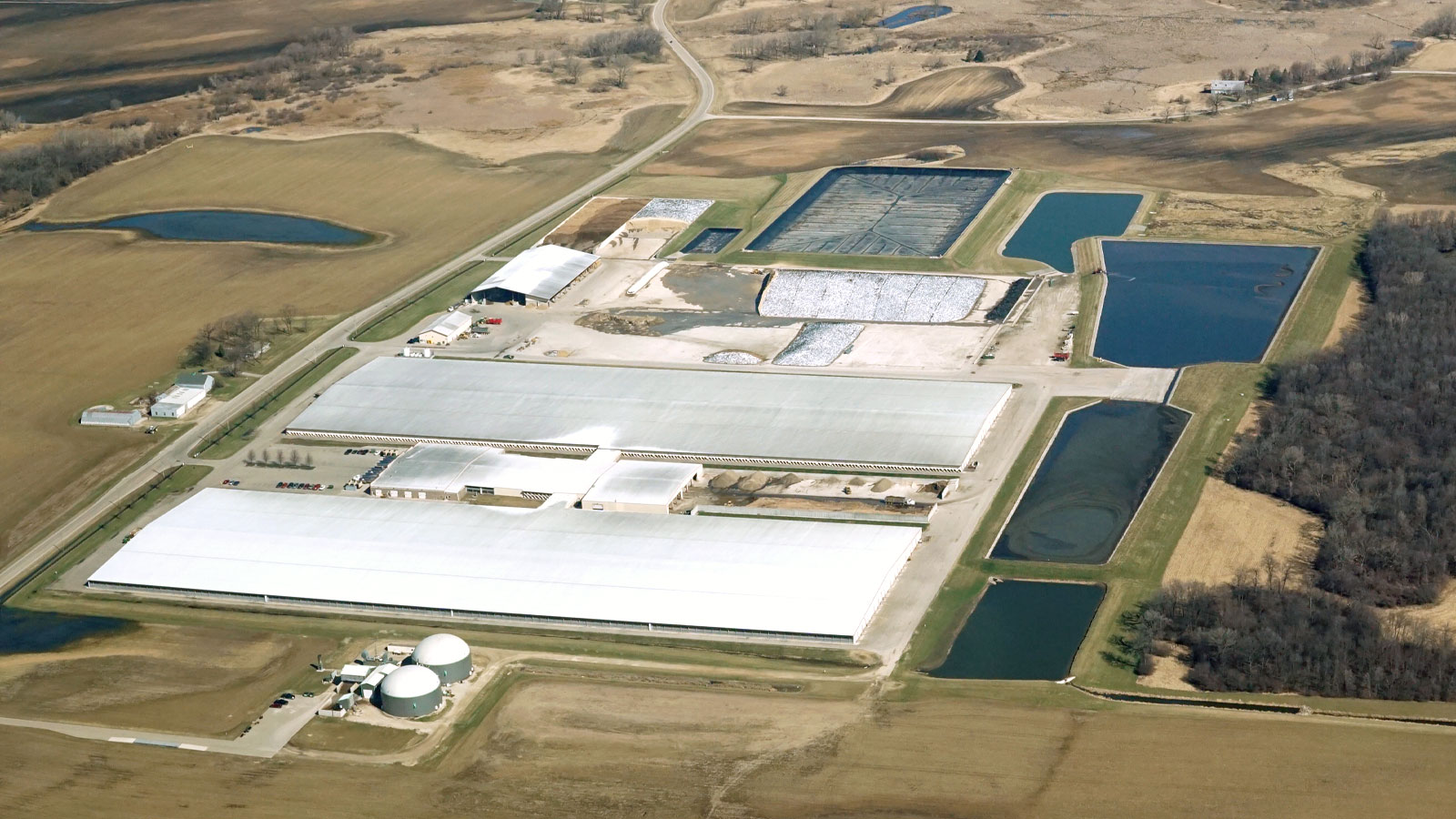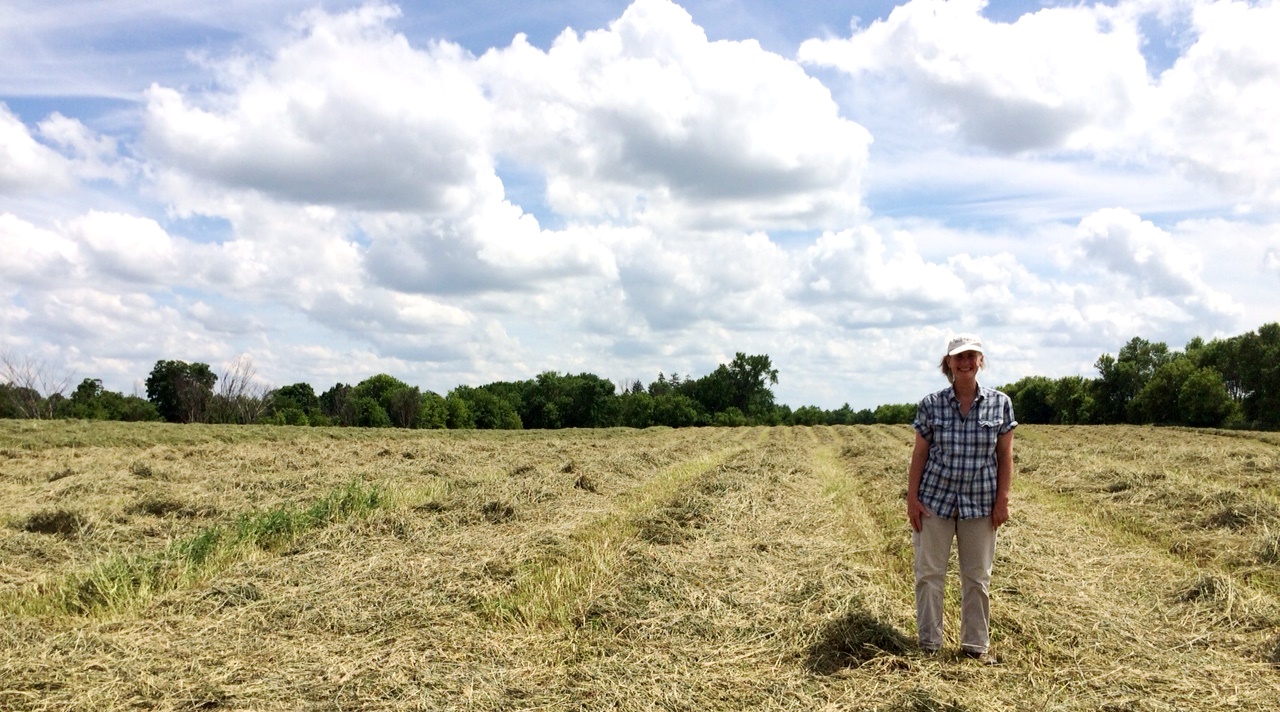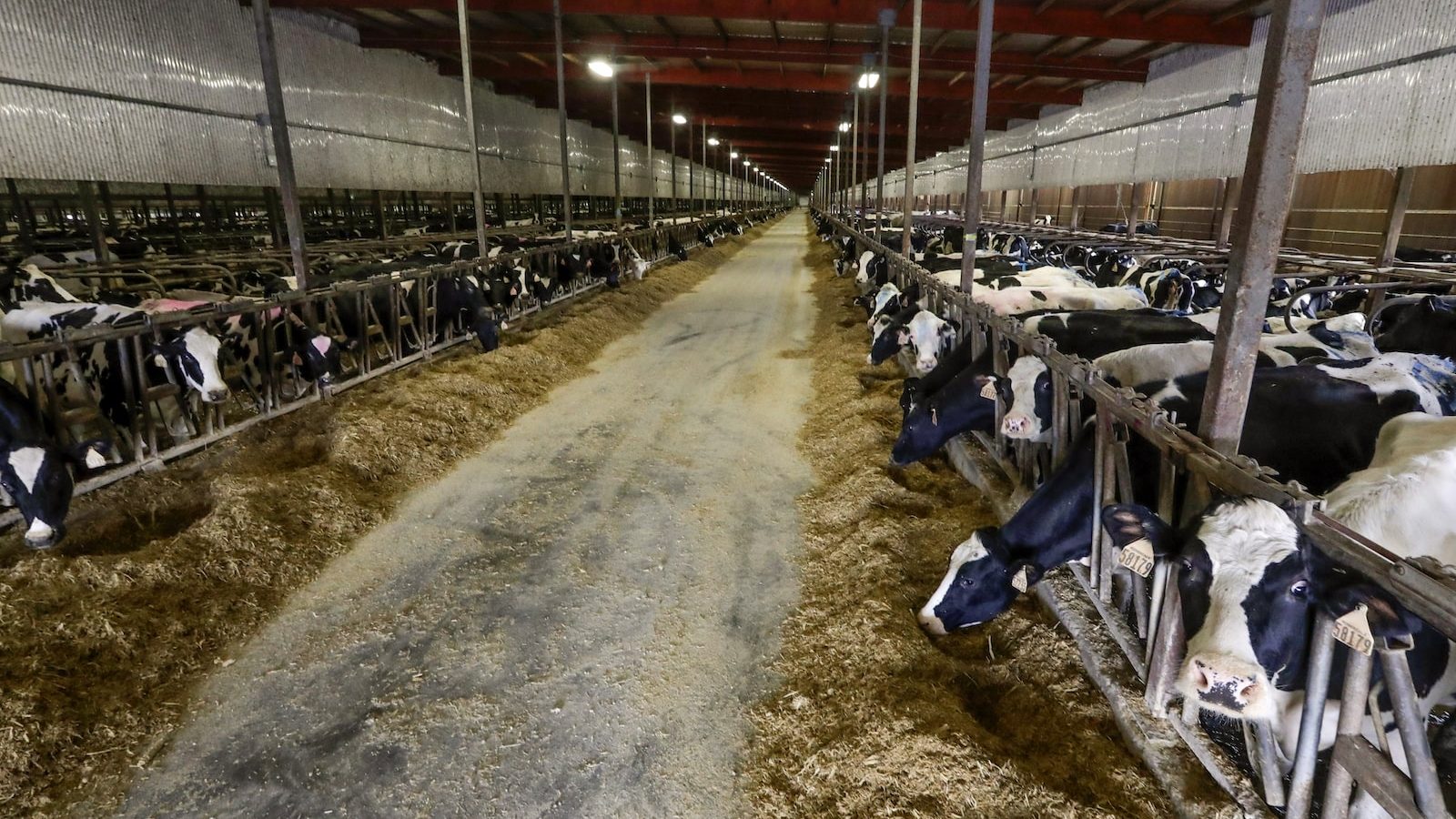Laketown, Wisconsin, is a rural community of 949 people, spread out among the green fields and ample lakes of the state’s northwestern corner, just over an hour outside of Minneapolis. Lisa Doerr has lived there since 2001, when she and her husband started growing hay and grass for livestock and raising horses. The town and its surrounding area, the St. Croix River Valley, are home to lots of small farmers like them; much of the food people eat here is grown locally.
“It’s not a big corporate place,” Doerr said. “There’s a lot to protect here.”
Now, Laketown is at the center of a battle over this rural character, as the town aims to limit pollution from large, industrial livestock farms, also known as concentrated animal feeding operations, or CAFOs. Over the past few months, Laketown and two nearby towns, Trade Lake and Eureka, have passed laws regulating how CAFOs can operate, requiring them to show how they will dispose of dead animals and avoid polluting groundwater. But these policies have faced stiff pushback from the state’s powerful agricultural lobby, which has called the new regulations illegal.
In the past decade, the industrialization of agriculture has led to a sharp rise in the number of CAFOs, as large livestock operations offer cheaper meat and crowd out smaller farmers. Between 2012 and 2017, the number of animals living on factory farms grew by 14 percent, even as the overall number of operations shrank. From North Carolina to Iowa, CAFOs have been found to pollute drinking water, release noxious gases, and encourage the spread of disease due to the animals’ confined conditions. In March, a nationwide outbreak of avian flu led an egg farm in Wisconsin to kill 2.7 million chickens, creating intolerable smells for a community downwind of the site where their bodies were dumped.
Even when CAFOs legally dispose of animal waste — usually by spreading it on nearby fields as fertilizer — the sheer volume of manure can overload local streams and groundwater supplies with nitrates and bacteria, said Adam Voskuil, a Wisconsin-based attorney with the nonprofit Midwest Environmental Advocates. That’s especially problematic in states like Wisconsin, where more than 900,000 residents rely on private wells for their drinking water.
“There’s a health concern associated with that aggregation of contaminants and its transport into private households,” Voskuil said.

In light of these risks, Polk County — where Laketown is located — enacted a one-year moratorium on CAFOs in 2019 to give it time to study the problem and develop a solution. The issue grew more urgent after an Iowa-based company announced plans to build a hog farm in nearby Trade Lake, which would house 26,000 pigs and produce 9 million gallons of waste each year. In 2021, Laketown and five other communities formed the Large Livestock Town Partnership to research potential problems with CAFOs and develop a model ordinance that individual towns could adopt to regulate them.
The ordinance requires livestock operations with more than 700 animal units to apply for a permit from the town and pay an application fee. The owner has to share the facility’s plans to prevent the spread of infectious diseases, implement a waste management strategy, contain toxic air pollution and odors, report unusual animal deaths, maintain fire safety, and avoid damaging any nearby water resources, as well as demonstrate that the project will provide a net benefit to the town. The application has to be signed by at least one “qualified and professionally licensed” engineer or geoscientist who has reviewed the proposal.
Since Laketown passed its ordinance in February and two other towns followed in March, their efforts have faced stiff resistance. On April 13, two dairy lobbying groups wrote a letter to the Wisconsin Department of Agriculture, Trade and Consumer Protection, or DATCP, asking the state to review the ordinances and arguing that the “towns have clearly ignored current laws, regulations and related review and approval processes.” And late last month, two other dairy associations — Venture Dairy Cooperative and the Wisconsin Dairy Alliance — wrote to Laketown directly, telling the town clerk that the CAFO ordinance “contains at least 16 provisions that are preempted by state law and illegal,” including imposing fees and requiring plans for odor prevention.
In a statement, DATCP spokesperson Sam Otterson said the department is “gathering information and identifying the issues so that a legal review can determine the scope of Department authority and duty under applicable law and code provisions.”
At the heart of the conflict is a 2004 law that prevents local governments from enacting stricter regulations for CAFOs than the state standards, which require CAFOs to submit “nutrient management plans” to show how they’ll dispose of their waste, set minimum “setbacks” or distances between these facilities and nearby properties, and establish standards for manure storage. If facilities meet these criteria, towns are required to issue them permits.
Though the law allows exceptions if local governments can “clearly show that the requirements are needed to protect public health or safety,” Doerr, who chaired the Large Livestock Town Partnership, said the new ordinances don’t regulate where CAFOs are sited — only how they operate. Requiring them to have a plan to minimize air pollution, ensure fire safety, and deal with biohazards such as an avian flu outbreak is part of the towns’ police powers and necessary to protect citizens, she and others have argued.

“We have attorneys that have looked at [the ordinance],” said Don Anderson, chair of the Eureka town board. “They helped us formulate it, and are quite confident that it’s within the law.”
Wisconsin isn’t the only state where local governments are facing off against industry-friendly state regulations for CAFOs. In Missouri, where an industrial hog farm spilled more than 300,000 gallons of waste into local streams last spring, a 2019 law bars counties from issuing rules for CAFOs that differ from the state’s policies in any way. Two counties sued to challenge the law, which is headed to the state Supreme Court.
All 50 states have passed some form of “right-to-farm” laws, which protect livestock operations from being sued over “nuisances” like odors or pollution. And within Wisconsin, state officials are fighting to regulate CAFOs even under the scope of their current authority. Late last month, one of the state’s largest dairy farms sued the state Department of Natural Resources for denying its request to nearly double in size.
For Doerr and other Laketown residents, legal threats are a consequence of challenging the agricultural industry, which they say is not held accountable for its impact on health and the environment.
“It’s pretty much our life’s work that we have invested in this farm,” Doerr said. “And we really aren’t going to sit here and have them tell us that they’re going to bring in some giant corporations and put a CAFO at the end of our driveway.”



